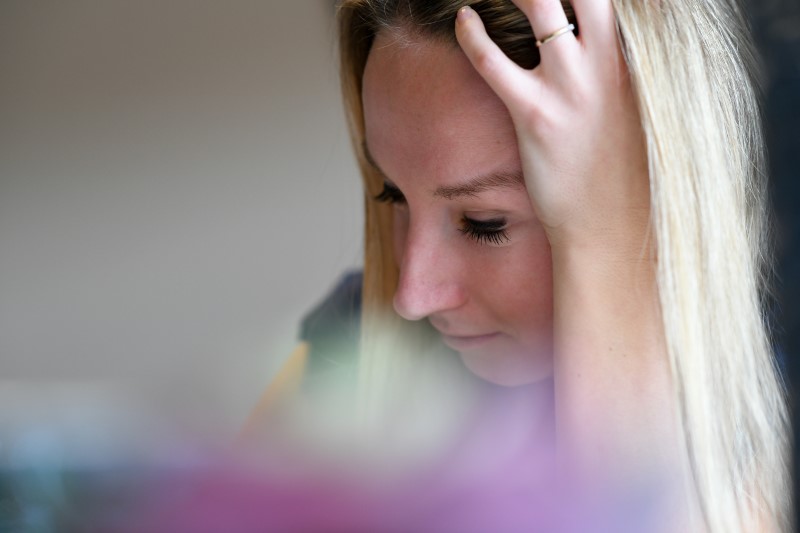How Concussion Diagnosis and Recovery Works

January 09, 2020
By: Katie Lynch
As many as 3.8 million concussions occur each year in the U.S. during competitive sports and recreational activities, according to CDC estimates. These injuries are commonly caused by falls, motor vehicle crashes and impact injuries.
Helping us understand concussion a little better, Felicia Gliksman, D.O., M.P.H, Director of the Comprehensive Concussion Center at Hackensack University Medical Center, explains some of the common questions and misconceptions when it comes to concussion and recovery.
In order for it to be a concussion, does consciousness need to be lost?
“While loss of consciousness may occur in some instances of concussion, it is not a requirement to make a diagnosis of concussion,” share Dr. Gliksman.
“Other commons symptoms that can happen almost immediately are headache, nausea or vomiting, dizziness, or confusion,” she notes. “If the person can’t recall events prior to the hit or fall, or are unsure of what’s happening, it is likely a concussion.”
Is a concussion only a result of a hitting your head?
A concussion is caused from a jolt or blow to the head or body.
“Someone does not need a hit directly to the head to get a concussion. They may be hit in another part of the body, transmitting a force to the head – like in a bike or car accident. A concussion is caused by the brain shifting inside the skull, so any type of physical force that causes your head to rattle around could cause a concussion.”
Do I need a CT scan to confirm a concussion diagnosis?
“A concussion is diagnosed clinically – this means, we evaluate your signs, symptoms and medical examination to make the diagnosis,” Dr. Gliksman says. “Some patients think they need a CT scan or another form of neuroimaging, but to make the diagnosis of concussion, that’s not always necessary. Depending on the examination and if symptoms persist, at that point, we may recommend additional assessments such as a neuropsychological evaluation, cognitive therapy or vestibular therapy.”
Are there different levels, or grades of concussion?
“A concussion is also called a mild traumatic brain injury”, adds Dr. Gliksman. “We no longer use a grading system to determine the severity of a concussion. The patient’s individual assessment guides treatment option, regardless if there was or was not loss of consciousness. Every concussion is different, and there’s no need to classify the injury as a specific grade.”
How long does it take to recover from a concussion?
Most concussion patients feel better in 7 to 10 days, however for some, it may take longer.
“I had a patient come to me, diagnosed with a concussion 8 days prior, say ‘I looked it up and I am supposed to feel better in 7 days, it’s now day 8,’” Dr. Gliksman reflects. “It’s great that patients want to be well informed, and understand their health condition, however patients need to remember that every case and condition is different.”
“The length of time for recovery varies from patient to patient. If you’ve had repeated injury, that could cause a prolonged recovery,” mentions Dr. Gliksman. “There a lot of other factors that play into recovery time like stress levels, adequate sleep along with cognitive rest, nutrition and hydration.”
Most people often feel better within two weeks; however, recovery depends on each person’s individual healing process. Recovery may take longer in the pediatric population as well.
How do you plan a recovery?
“I work closely with my patients to develop an individualized plan to guide them in returning to their normal daily activities. Whether we are planning for them to return to school, sports or work, each plan is tailored to make sure they get the appropriate care and rest before returning to their normal routine. These plans are also shared with the patient’s school, sport or workplace to ensure any needed accommodations are addressed.”
“We’ll provide patients with a program of information, outlining the stages and process of their healing. Stage one starts with no activity and total physical and cognitive rest, and we then slowly add in more activity as time progresses, to ultimately get them back to 100%.”
The first stage may be 1-2 days but some patients may need longer. However, under the guidance of the physician and physical therapist, some may be encouraged to try some light physical activity as long as it does not worsen the baseline symptoms.
“Just remember, if you have a concussion, until you are cleared by a health care professional you should not return to your normal activities, that includes the physical and mental activities,” advises Dr. Gliksman.
“A concussion is mild traumatic brain injury and it needs to be taken seriously. If you ignore your treatment plan, and suffer a second concussion before your brain has fully healed, you put yourself at greater risk for worsening of symptoms, longer recovery, or worse -second impact syndrome. The brain can rapidly swell, sometimes causing death.”
Felicia Gliksman, D.O. practices pediatric neurology at Joseph M. Sanzari Children’s Hospital at Hackensack University Medical Center. She is board certified in neurology, with special qualification in child neurology. To schedule an appointment with Dr. Gliksman, call 551-996-3200.
Next Steps & Resources:
- Meet our clinical contributor: Felicia Gliksman, D.O., M.P.H,
- To make an appointment with a doctor near you, call 800-822-8905 or visit our website.
The material provided through HealthU is intended to be used as general information only and should not replace the advice of your physician. Always consult your physician for individual care.






